#georges desvallières
Text

Salome, Georges Desvallières, 1905
1 note
·
View note
Text

'Salome'. Georges Desvallières. 1905.
1K notes
·
View notes
Text


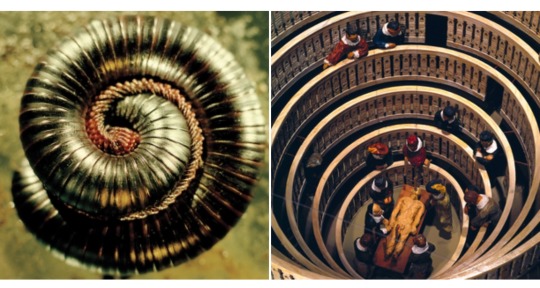





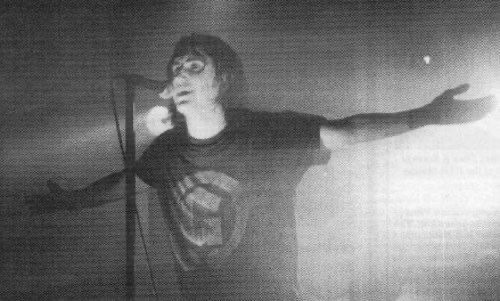

anatomy, martyrdom, fame, and trent reznor
sources under the cut
nine inch nails' "closer" music video
saint sebastian by gudio reni
article by adam steiner
nine inch nails "closer to god" promotional photo
scale model of the Padua anatomical theatre
quote by trent reznor
lady gaga performs "paparazzi" at the 2008 VMAs
joy division, "atrocity exhibition"
nine inch nails, "march of the pigs"
religious painting by georges desvallières
nine inch nails, "right where it belongs"
nine inch nails, "burning bright / field on fire"
album review of nine inch nails' "the fragile", by jon pareles
#drops dead on the floor. this was a collaborative effort btw#nine inch nails#🕸#this doesnt even scratch the surface i expect my mutuals to make more of these btw
723 notes
·
View notes
Text

George Desvallières - Archery Shooters (1895), Pastel. Musée d'Orsay, France.
George Desvallières (1861–1950) was a French painter. He painted portraits at first, but a relationship with Gustave Moreau turned him towards an interest in mythology and religion.
Works by Desvallières may be found in the Musée d'Orsay and the Musée du Louvre. He died in Paris in 1950.
(Don Bryson publication)
15 notes
·
View notes
Text

George Desvallières La Vigne 1910
95 notes
·
View notes
Text


Georges Desvallières (1861 - 1950)
4 notes
·
View notes
Text
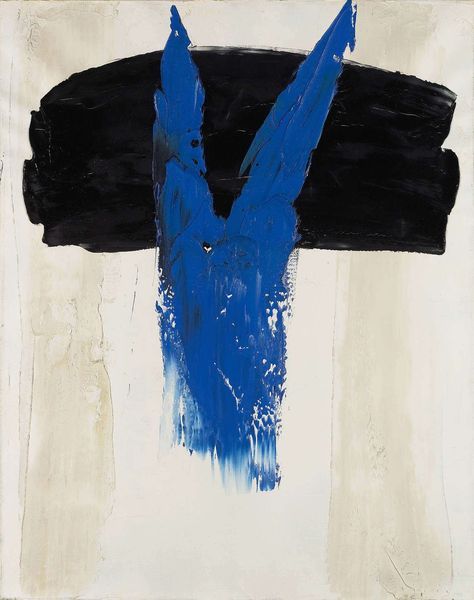
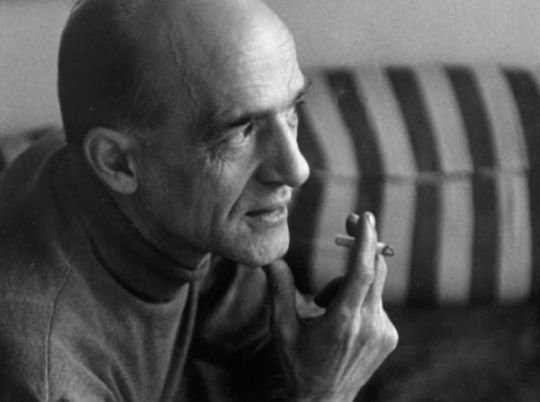

Paul-Émile Borduas, painter (1905 - 1960, Québec). Leader of the Automatistes and main author of the manifesto Refus Global, he had a profound influence on art in Québec.
In his youth he was fortunate enough to meet Ozias Leduc, who lived in the small rural district of Trente in Saint-Hilaire. Leduc took him on as an apprentice painter; bringing him to Sherbrooke, Halifax and Montréal (to the baptisteries of the Notre-Dame and the Saints-Anges à Lachine churches) and introducing him to the art of church decoration. Leduc encouraged young Borduas to study at the École des beaux-arts in Montréal (1923-27) and obtained from the then parish priest of Notre-Dame in Montréal, Monseigneur Olivier Maurault, the necessary funds to send him to France (1928-1930). He studied at the Ateliers d'art sacré in Paris, directed by Maurice Denis and Georges Desvallières.
This first contact with Europe was extremely important for the young Borduas; he discovered the painters of the Paris school, from Pascin to Renoir. Unlike his colleague Alfred Pellan, however, who spent 14 years in Paris, Borduas did not have any contact at this time with the Surrealists. Upon his return to Canada the economic crisis forced Borduas to abandon his dream of becoming a church decorator, a job for which he had been carefully trained and which had also been the occupation of his master, "Monsieur Leduc." To survive he had to fall back on the teaching of drawing in the primary schools of Montréal.
In 1937 Borduas obtained a post somewhat closer to his aspirations, that of professor at the École du Meuble. Throughout this period, he painted little and destroyed a large number of paintings. His style was still figurative and betrayed the influences of his Parisian masters, James W. Morrice and finally also Cézanne and Rouault. His discovery of the Surrealist movement and his reading of "Château étoilé" by André Breton (a text Borduas read in the review Minotaure and which eventually would become chapter 5 in Breton's L'Amour fou) were decisive for his further career.
Continue reading
4 notes
·
View notes
Photo





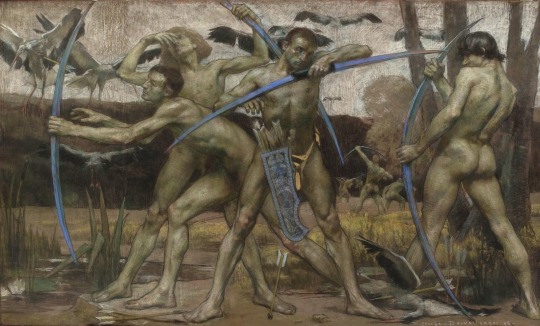
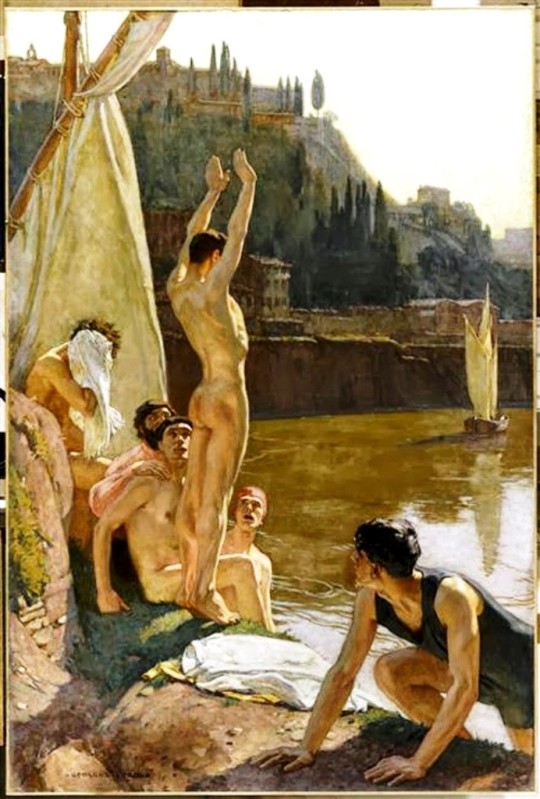
Retour à mon projet de présenter la plupart de mes 53880 photos (nouveau compte approximatif !)
2013. Journée musées à Paris. Au Musée d’Orsay, il y eut une expo : “Masculin Masculin”, fort...intéressante !
- Jean-Bernard Duseigneur - "Roland furieux”
- Frédéric Bazille - "le pêcheur à l'épervier”
- Alexandre Deineka - "Douche”
- Henri Foucault - “Homme Noir”
- William-Adolphe Bouguereau - “L’égalité devant la Mort” + Ron Mueck - “Dead Dad” (très étrange par sa petitesse)
- Georges Desvallières - "Tireurs à l' Arc”
- Georges-Paul Leroux - "Baigneurs du Tibre”
#souvenirs#paris#orsay#musée d'orsay#expo#masculin masculiin#homme#masculinité#duseigneur#jean-bernard duseigneur#roland furieux#barbe#moustache#bazille#feédéric bazille#impressionniste#pêcheur à l'épervier#deineka#douche#nudité#henri foucault#bouguereau#william-adolphe bouguereau#égalité devant la mort#mort#mueck#ron mueck#dead dad#descallières#georges desvallières
18 notes
·
View notes
Text
The Core of Christianity: Be Loved
THE BIGGEST and most common misunderstanding regarding Christianity is to see it as all about being good.
All too often people think Christianity’s first (or only) proclamation is: “Be good.” This emphasis (which is not unknown even within Christian circles) implies that the practice of Christianity centers on will — on doing, and more specifically, doing “good.” In fact, though, the gospel primarily declares something entirely different. Christianity at its pulsating core proclaims: ”Be loved.”
The “good news” is that the God who created us is the God who forgives us, loves us, and calls us to a life of love. The gospel recognizes our dual tendency: to put ourselves at the center of the universe but also to be profoundly uncomfortable in that position.
When we hear and heed the call to be loved, we can heave a sigh of relief and realize we don’t hold reality together by our efforts; we don’t have to spend ourselves creating and defending a self-image. God has given us our self-image as a free gift; we are created in the image of God, and we are forgiven sinners. God has called us into being; we are not our own creator; and we are not expected to be our own redeemer.
- Gregory S. Clapper
Living Your Heart’s Desire
From page 35 of Living Your Heart’s Desire: God’s Call and Your Vocation by Gregory S. Clapper. Copyright © 2005 by Gregory S. Clapper. All rights reserved. Used by permission of Upper Room Books
+++

“Sacred Heart” by Georges Desvallières, 1905
http://www.georgedesvallieres.com/fiche1905_352sacrecoeur_en.html.
Read detailed commentary on the art and the artist at https://www.catholicdigest.com/amp/from-the-magazine/way-of-beauty/heart-of-love/
Here are some excerpts:
... Desvallières’ austere, gray-toned palette diverges abruptly from the normal range of warm reddish colors to communicate a message of deep and anguished desolation. The short, scratchy brush strokes upset the conventional soft lines, echoing the stripes that Christ bore and the spikey thorns of his crown. Above all, the raw, naked flesh of the Lord’s breast, ripped open in a small burst of fleshy red, pierces the body like the fiery orange sky behind the church. Everything speaks of the ravaged pain of Jesus’ love....
By placing the suffering Lord in front of the silhouette of the iconic church of Sacré Coeur in Paris, located high on a hill overlooking the artists’ quarter of Montmartre, Desvallières not only identifies the subject of the composition but perches Jesus high atop the city, overlooking his people — even as from below we gaze up at the pierced one, lifted high above the earth (see John 3:14).
Through the image of the church, Desvallières also powerfully evokes the mystery that transpires in that sacred structure, where the sacrifice of Jesus is re-presented daily upon the altar in an un-bloody way. A church is always an image of Christ’s body, and here the doubling creates a mirror effect. Jesus pulls back the veil of his flesh and allows us to peek into the inner sanctum, to observe what transpires in the Holy of Holies at every Mass.
Devotion to the Sacred Heart is a spiritual entrance behind the veil of Jesus’ flesh. It is a devotion to that highest and deepest element of Jesus’ humanity — his human soul. Jesus’ soul is the seat of all his thoughts and desires, the living reservoir of his knowledge and love of the Father and of each one of us. It is this soul that harbors all the bottomless riches we penetrate and come to know in the risen Lord. Revealed in his flesh and through his wounded body, tortured upon the cross, the burning heart of Christ pours fiery life and color into the sad world of shadows and grayness.
0 notes
Text

Georges Olivier Desvallières - Salomé (1905)
0 notes
Photo

Georges Desvallières, Abstract Study, n.d.
18 notes
·
View notes
Photo

George Desvallières (1861–1950) — The Archery Shooters (pastel, 1895)
373 notes
·
View notes
Photo

Georges Desvallières - Salomé
4 notes
·
View notes
Photo

Georges Olivier Desvallières - Salomé (1905).
60 notes
·
View notes

